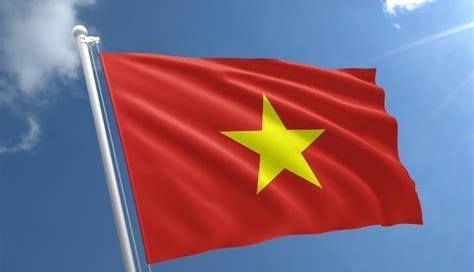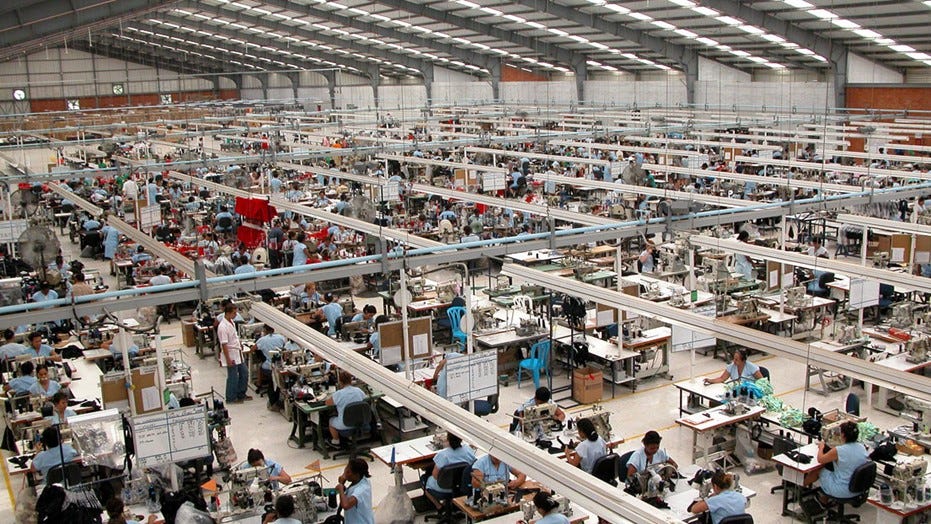Vietnam: from Frontier to Emerging Market?
The attractions of investing in Vietnam and the potential for an upgrade from 'Frontier Market' to 'Emerging Market' status
This Insight is not investment advice and should not be construed as such. Past performance is not predictive of future results. Fund(s) managed by Seraya Investment may be long or short securities mentioned in this Insight. Any resemblance of people or companies mentioned in this Insight to real entities is purely coincidental. Our full Disclaimer can be found here.
This Insight is an extract adapted from the Panah Fund letter to investors for Q2 2015.1
Vietnam now accounts more than one-quarter of the fund, making it Panah's second largest country exposure after Japan. Given the opportunities we see in Vietnam, we fully expect our exposure to grow over time. It thus seems appropriate to give an update on the Vietnamese economy and markets.
Our interest in Vietnam first arose when posed a hypothetical question late last year by a well-informed investor:
"Which market in Asia would you be happy to invest your money in for the next ten years, without any possibility of selling?"
After a bit of head-scratching, we decided to approach the question from two angles:
Which market in Asia is likely to experience the highest nominal GDP growth over the next decade (to support revenue and earnings growth); and,
Which market has a sufficient number of well-run companies trading at a valuation which allows one to buy this growth at a reasonable price?
Demographics seemed important. This ruled out much of North Asia and instead directed us towards the south of the continent. Countries such as India and Indonesia did indeed seem to have much ‘demographic potential’ (i.e., a young and rapidly growing population), but the markets in both locations already seem to be pricing in a positive outcome. The Philippines also appeared to be a good candidate, but the market's high valuations made us pause. Laos and Cambodia also seemed to have good potential, but the stock markets in both countries are too small to deploy a reasonable amount of capital.
It was only when we got to the bottom of our list of alphabetically-ordered Asian countries that we started to think that we had found our strongest candidate yet... Vietnam.
Emerging from a classic credit bust of its own making (2010-12), Vietnam now appears to be at the beginning of the end of a bank recapitalisation process. The currency has stabilised. Foreign direct investment, especially from Korea and Japan, is flowing into the country as Vietnam starts to transform itself into a fast-growing manufacturing hub. Vietnam is lucky enough to be located in a favourable location (next to the dominant Asian manufacturing behemoth to its north) which is relatively easy to integrate into global supply chains.
The country also has a young, diligent and relatively cheap workforce, and government policy is now supportive of foreign investment (for instance, by ensuring sufficient industrial estate land and tax breaks are available for foreign investors). The Trans-Pacific Partnership (‘TPP’), currently grinding its way through the political process in the US and other Asian countries, would give Vietnam an important boost if it can be implemented. GDP growth is now starting to pick up, and hit +6.44% in Q2 2015 (the country’s fastest growth since 2007).
There are many things about Vietnam now that remind us of China ten years ago, just before the accession to the World Trade Organisation. In short, Vietnam appears to be one of the most interesting structural growth stories in the region, yet the country's stock market is among the cheapest in Asia (trading at a modest 12x forward P/E ratio).
Most importantly, an intensive program of Vietnam company-visits in the first half of 2015 persuaded us that the country has a critical mass of attractively-valued companies run by solid managers, who are keen to push their firms forward and have a constructive attitude towards minority shareholders.
The investment case sounds interesting so far, so where's the catch? As we hinted in our last quarterly, market access is the biggest challenge. It can take several months for a foreign investment fund to set up a Vietnam trading account, and it can be difficult to get hold of the stocks that one would like to buy.
There are two main reasons:
The market is fairly illiquid (a 'large cap' in Vietnam appears to be a stock with a market cap greater than US $500mn); and,
Foreign Ownership Limits (‘FOL’) prevent foreigners owning more than 49% of any non-banking institutions (and up to 30% of banks).
Most of the bigger and better companies in Vietnam are already 'full' for foreigners (in fact, 30% of Vietnam's market capitalisation is already at the FOL), which means foreign funds cannot buy any more shares in these companies. This has lead to an unusual situation where the marginal buyers and sellers of these stocks are typically local retail investors who tend to have a much shorter time-horizon. Meanwhile, foreigners who want to buy or sell blocks in ‘quality FOL companies’ (such as Vinamilk, FPT or DHG) usually do so at a substantial premium to market price - as high as 20-30%.
Occasionally, shares in an FOL stock do become available to foreigners at the stated market price (e.g., if management exercises stock options), but in such cases, the shares are usually snapped up in minutes by the foreign funds closest to the action. In short, Vietnamese stocks might well look cheap but it can be difficult to buy them at the prices advertised!2
There is an interesting twist to this story, which is that it is actually possible to get access to Vietnamese stocks – even FOL stocks – at a substantial discount to the market price. Various closed-end funds were set up to invest in Vietnam as early as the 1990s and then again in the early 2000s. In the intervening years, these closed-end funds have become the dominant and most experienced institutional investors within Vietnam. While these funds once traded at fat premiums to their Net Asset Values (‘NAVs’) during the boom years, they now trade a typical discount of 15-20% to NAV (in the past, the discounts have been much wider).
It is curious that many of these funds have more than half of NAV invested in stocks which have already reached their FOLs. If one wanted to duplicate the portfolios of these closed-end funds for oneself then one would actually have to pay a substantial premium to NAV to do so, yet they can be purchased at a discount on the European stock exchanges where they are traded.
These closed-end fund discounts have lasted many years – why should they close now? We think we see several potential reasons:
Buybacks and/or introduction of dividends (the former has not had much effect, but the latter might);
More closed-end funds might change to an open-ended structure (one or two have started to do so already, and as one would expect, these closed-end funds have converged towards NAV in anticipation of the event); and,
The government moves to change the law on Foreign Investment Limits, a process which seems to be starting already.
On 26 June, the Prime Minister of Vietnam signed Decree 60/2015, which will go into effect from 1 September. This decision will effectively lead to the raising of FOLs for many companies,3 and also appears to allow for the creation of Non-Voting Depository Receipts (‘NVDRs’) at some point in the future. This would mean that foreigners would be allowed to own most (if not all) listed equities in Vietnam without restrictions, albeit without voting rights.
We see a strong possibility that FOLs for most companies should gradually be lifted over the next twelve months. This FOL decision would also send a very strong message about the political will to liberalise and modernise Vietnam’s financial markets. It would presumably help with the SOE privatisation program, allowing more foreign capital and expertise to enter the country. It would also pave the way for the Vietnam market to be 'upgraded' to MSCI Emerging Market status at some point within the next few years, which would likely attract more significant capital flows to the country’s equity markets.
Already the Vietnam stock market has started to rally and is, at the time of writing, the best-performing stock market in Asia (ex-China) so far in 2015. Locals have started to 'front-run' the foreigners by buying into the popular FOL stocks, while foreigners at first rushed into the Vietnam Exchange-Traded Funds (‘ETFs’) after the Prime Minister's announcement in late June, and are now starting to buy the closed-end funds too.
We spent around four weeks of the first half of 2015 in Vietnam, meeting the management of around 50 companies around the country, as well as various government officials, economists, analysts and local fund managers. The Panah Fund has positions in several of the Vietnam closed-end funds, and has also been opportunistically building positions in several high-quality and attractively-valued Vietnamese companies that we have been fortunate enough to meet during the last few months.
Note that we are not prepared to pay a 20-30% ‘foreign premium’ to gain instant access to blocks of more popular FOL stocks. Instead, we are prepared to be patient. Besides, we think that we can find enough good companies where shares can be bought at or near market price. Over time, we hope to be able gradually reduce our positions in the closed-end funds as NAV discounts narrow, while also gradually increasing our positions in favoured individual companies as opportunities arise. Such opportunities should become more frequent as liquidity improves and foreign ownership restrictions are liberalised.
Vietnam is, however, still very much a 'frontier market' and there will certainly be investment challenges along the way. One interesting accounting idiosyncrasy in Vietnam is that Bonus and Welfare fund contributions (in some cases quite large) are recorded below-the-line - adjustments must be made accordingly. In addition, we have noticed a slightly worrying tendency for some listed companies to implement highly dilutive CB or equity placements. Generous Employee Stock Ownership Plans have also had a similar effect in some cases.
As in all markets, there are good companies and bad companies! Vietnam also has very real geopolitical challenges, and the country’s relationship with its northern neighbour can be strained at times (for instance, owing to unresolved territorial disputes in the South China Sea).
Nevertheless, we think that the risk-reward of investing in high-quality, attractively-valued Vietnamese companies is favourable. In future letters, we plan to share more information about some of the individual Vietnamese companies in which the Panah Fund is invested.
Thank you for reading.
Andrew Limond
The original source material has been edited for spelling, punctuation, grammar and clarity. Photographs, illustrations, diagrams and references have been updated to ensure relevance. Copies of the original quarterly letter source material are available to investors on request.
Vietnam’s ETFs have a related but different problem: they can only own stocks with plenty of foreign room (not the stocks trading at the FOL), and so are not representative of the broader market.
For companies which are regulated by explicit laws (e.g., telcos, banks) or other international commitments (e.g., WTO, future TPP), FOLs might still remain if specified in those agreements. Companies which have specific restrictions in their corporate charters might also keep some FOL restrictions. A framework on the exact opening of FOLs should become available over the next one to two months as the Ministry of Planning and Investments publishes its list of special conditions which might specify other FOLs by industry. For all other companies, unlimited foreign ownership is expected to be introduced in the near future.




